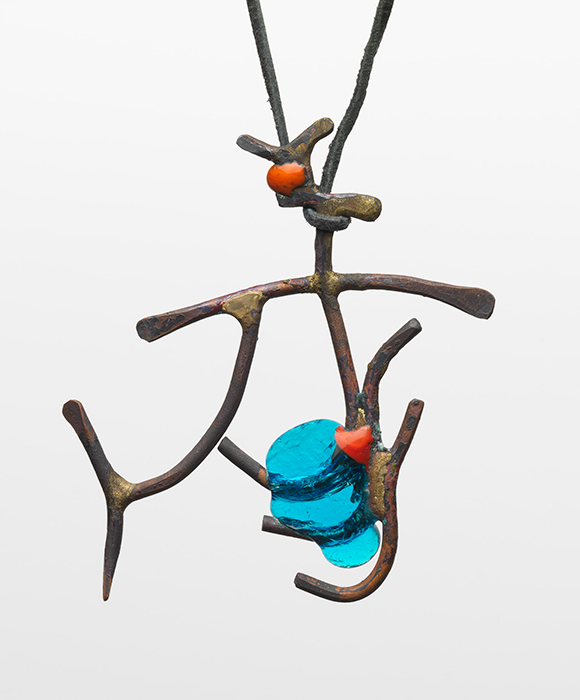The years following the Second World War saw an explosion of craft art in America. Men and women from all walks of life and corners of the globe rediscovered and reinvigorated such traditional media as ceramics, fiber, glass, metal and wood. In our own region, Rochester Institute of Technology and Alfred University became major creative centers.
This survey of the studio craft movement includes works by more than 170 artists and craftsmen, among them such masters as Harry Bertoia, Anni Albers, Isamu Noguchi, Wendell Castle, Albert Paley, Peter Voulkos, Harvey Littleton and Maria Martinez. Today, the work of these “midcentury modern” artists is highly sought by collectors.
The exhibition, which spans the years from 1945 to 1969, begins with the early postwar era, when the independent craftsman lifestyle became a compelling alternative to the anonymity of the corporate world. It then moves on to the turbulent late 1950s and 1960s, which witnessed the emergence of the crafted object as a work of art informed by Abstract Expressionism, Pop Art, Funk, social commentary and counterculture.
Western New York and the Craft Movement
The importance of western New York in the history of the craft movement cannot be underestimated. Three institutions in particular are well represented in Crafting Modernism: RIT’s School for American Crafts (SAC), the New York State College of Ceramics at Alfred University, and Syracuse University. At least 20 artists with work in the show taught or studied at one of these institutions.
Artists with SAC connections included furniture maker and sculptor Wendell Castle, artist-in-residence and faculty member since the 1960s; metalsmith Albert Paley, who came to the school in 1968 and today holds an endowed chair; metalsmith Hans Christensen, who taught 1954–83; Christensen students Vincent Ferrini, Ronald Senungetuk and Olaf Skoogfors; jeweler Ronald Hayes Pearson, who taught at the school and cofounded Shop One, the historic craftsman-run gallery which operated 1953–77; metalsmith John “Jack” Prip, another founder of Shop One; and Prip students Robert J. King, Lorna Pearson Watson and Ruth Radakovich. (Radakovich was further connected with the Memorial Art Gallery, where she taught at the Creative Workshop.) And two artists—Charles Laloma and Earl McCutchen—taught at SAC in 1947-48, when it was headquartered at Alfred University.
Other artists with Alfred connections included F. Carlton Ball, Fong Chow,Ka-Kwong Hui, Joel Philip Myers, William Parry and Robert Chapman Turner.
Artists with Syracuse University connections included silversmith John C. Marshall; and jeweler and metalsmith Earl Pardon, who went on to chair the art department at Skidmore College.
Crafting Modernism is made possible through the generosity of the National Endowment for the Arts; the Henry Luce Foundation; and the Craft Research Fund of the Center for Craft, Creativity and Design. It was organized by the Museum of Arts and Design, New York City.
In Rochester, it is sponsored by Harter Secrest & Emery LLP, with additional support from the Mabel Fenner Lyon Fund, the Gallery Council of the Memorial Art Gallery, Ron and Cathy Paprocki and Mann’s Jewelers. Support is also provided by the friends of Grant Holcomb in honor of his tenure as Director of the Memorial Art Gallery.
Crafting Modernism was organized by curator Jeannine Falino and associate curator Jennifer Scanlan of the Museum of Arts and Design, where the show opened in October 2011.

